Recuperative ventilation is a worthy replacement for
In this article we will talk about what is ventilation with a heat exchanger, what principle it works, and what are its characteristic advantages and disadvantages.
The topic of the article was not chosen by chance, since fresh air is a guarantee of health. That is why the search for the most effective ventilation system with the onset of the warm season is becoming increasingly important.
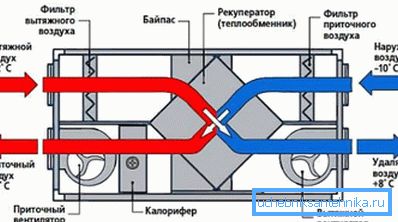
Currently, the market has a wide range of different solutions that will make the air exchange in the room more intense. But sometimes, in addition to performance, there are requirements for ventilation systems in terms of quiet operation, energy efficiency, compact size, ease of self-maintenance, etc.
Of course, not every household ventilation system meets all the listed requirements. But there is equipment that, in most operational parameters, is ahead of traditional devices. In this case, we are talking about ventilation systems with a heat exchanger and we will tell you about this equipment in as much detail as possible.
Reasons for replacing conventional ventilation with analogs with a heat exchanger
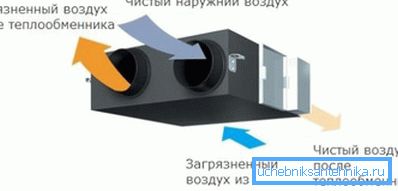
Supply and exhaust systems equipped with an air recuperator on the territory of the post-Soviet space are still rarely used, partly because of the novelty of the technology, partly because of the allegedly high cost of equipment. Nevertheless, the technology is ubiquitous in Western Europe and the North American continent, which proves its viability.
Why do economical Europeans prefer systems whose price is higher than the cost of traditional indoor air exchange schemes?
Natural ventilation, characteristic of old buildings, involves the penetration of air from the outside through the gaps in the window and door porches. But, in the case of installation of modern double-glazed windows and hermetic entrance doors, traditional schemes do not work. As a result, air exchange is disturbed, which leads to undesirable consequences.
With the onset of the warm season, it is possible to deal with such consequences by opening windows. But, because in the cold season, the need for intensive air exchange has not been canceled. Of course, you can open the windows in winter, but in the end, the heat will evaporate outside, for which you pay money.
The question is, is it worth it to waste money on the wind, or will it still be wise to use the system that will ensure the intensity of air exchange while maintaining heat in the house?
Continuing the topic of the inappropriateness of using traditional ventilation schemes, we note that unfiltered dirty air enters the room through a window or an open window, which is especially noticeable within the city limits.
And finally, the traditional supply and exhaust ventilation is deliberately uncontrollable, which is fraught with drafts and discomfort. At the same time, ventilation in a private house with a cold air recuperator allows for intensive air exchange without previously listed negative effects.
We protect the heat without compromising the quality of ventilation

The principle of recovery, on which the work of modern ventilation systems is based, is as follows:
- Warm exhaust air is discharged outside.
- Outside comes fresh air, which is an order of magnitude colder than the flow to the outside.
- A warm stream, meeting cold, gives off some of the heat and only after that is displayed on the street in a completely spent state.
- Fresh air enters the room and is simultaneously brought to the temperature of the outlet stream.
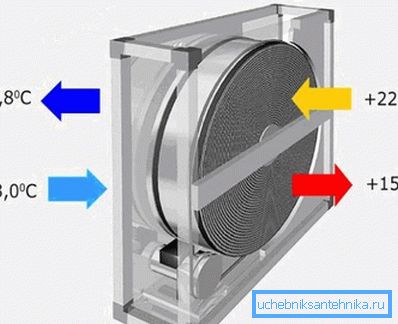
Consider how such a scheme can be implemented in simple systems with supply and exhaust duct:
- Plate heat exchanger is a cassette that is installed in the ventilation duct. The heated stream removed from the room, passing through the radiator, transfers most of the heat to the metal heat exchanger. The heat exchanger in turn gives off heat to the incoming stream.
- Rotary heat exchanger is a more technological version of plate modification.
The principle of operation of the device is based on heat exchange between the incoming and outgoing air flow. But unlike the plate analogue, which is static, the heat exchanger, made in the form of a rotor, rotates. Due to the speed of rotation, you can adjust the intensity of the process.
Selection of the heat exchanger
After we decided on what a heat exchanger is in ventilation and by what principle it works, it remains to determine the choice of a suitable device.
The main criteria for considering products on the market will be such characteristics as price, principle of operation, degree of performance, reliability and economy.
- The plate heat exchanger with a heat exchanger made of aluminum is distinguished by an affordable price, which is why they are available to many people and this is an obvious advantage.. Incoming and outgoing flows in the device do not mix, as they are separated by aluminum foil.

Among the disadvantages of this solution, we note the limited performance in the cold season.
In winter, the heat exchanger frost freezes and a short amount of time is needed to thaw it. Due to the need for defrosting, power consumption increases in comparison with other types of heat exchangers.
Plate modifications with aluminum partitions are not recommended for use in ventilation systems serving residential premises. The fact is that during the cold season these recuperators dry the air, and therefore along with them you will need to use a humidifier.
To date, modifications with an aluminum plate heat exchanger are the best choice for ventilation devices in swimming pools and baths.
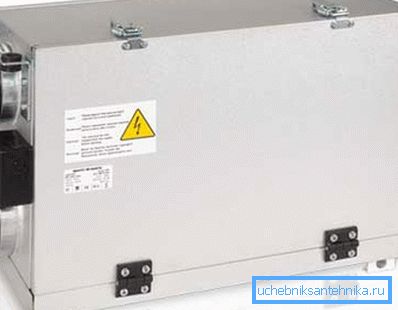
- A plate heat exchanger with a plastic heat exchanger is also available, as is an aluminum modification.. But, due to the technical parameters of polymeric materials, the efficiency of the plastic heat exchanger is slightly higher than in the case of the aluminum equivalent.
- A plate heat exchanger with a cellulose heat exchanger and a single cassette is a device that allows you to return to the room not only the temperature, but also most of the moisture that was in the exhaust air. As a result, using such devices, it is possible to ensure a stable level of moisture content in the air, which is important when it comes to ventilation of residential premises.
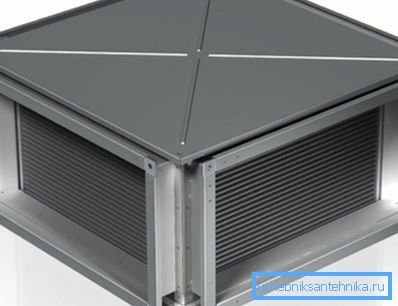
Cellulose partitions used in the heat exchanger effectively separate the incoming and outgoing air streams, are soaked with moisture, but at the same time they do not freeze like the previously listed modifications. As a result, there is no need for long-term thawing.
That is why such devices are not only high-performance, but also economical in terms of power consumption.
Important: Instructions for the use of such heat exchangers do not provide for the use of rooms for drainage.
- A plate heat exchanger with a cellulose heat exchanger and a double cassette is a more productive version of the single cassette modification.. Moreover, devices with a double cassette are characterized by less noticeable temperature differences, and therefore freezing of the heat exchanger is completely excluded.
Important: The price of such a product is slightly higher than the cost of modifications with a single cassette.
- Rotary heat exchangers are characterized by high efficiency in comparison with plate modifications with a single cassette.. However, in terms of performance, the rotary models are somewhat inferior to lamellar counterparts with a double cassette.
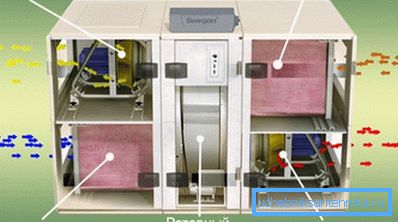
A significant advantage is extremely low power consumption. Despite the fact that devices of this type are not cheap, their price is justified within three to four years.
The disadvantage of rotary devices is non-ideal flow separation. Therefore, about 10% of the exhaust air can be mixed with the fresh supply air.
Important: When choosing a rotary heat exchanger, it is necessary to take into account that it requires more frequent maintenance service than plate modifications.
What to look for when buying a supply and exhaust system with a heat exchanger
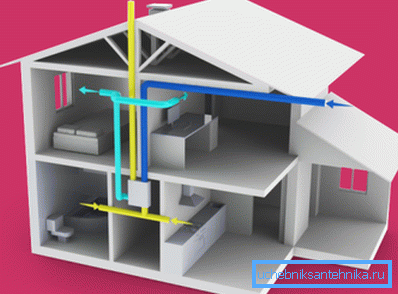
When deciding on the acquisition of a ventilation system with a heat exchanger, we draw attention to the following points:
- Plant performance - these parameters can be obtained from specialists who will be directly involved in the design development and installation work. When determining these parameters, room dimensions, layout, etc. are taken into account.
- Resistance of ducts to incoming and outgoing flows during the operation of a particular installation.
- The ability to perform maintenance services with their own hands.
- Energy class of the selected device and, as a result, its efficiency. Knowing this parameter, you can get a general idea of how much equipment maintenance will cost.
Conclusion
Now we know which ventilation systems and heat exchanger can make the room more comfortable. It remains to choose the system that will be the best solution for your home.
Have any questions? More useful information can be found by watching the video in this article.